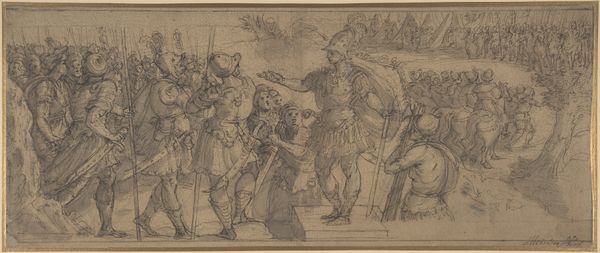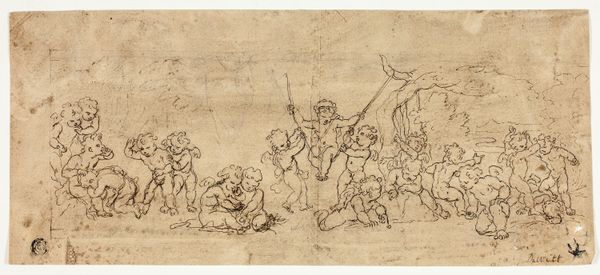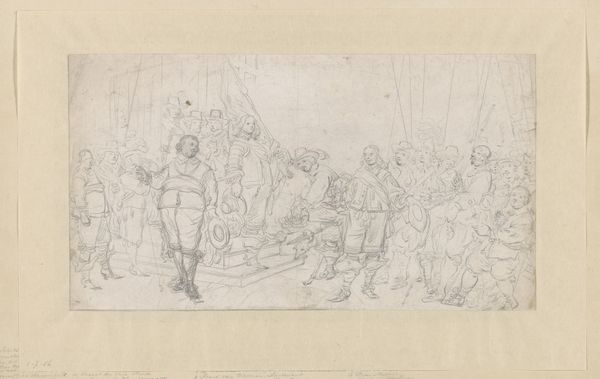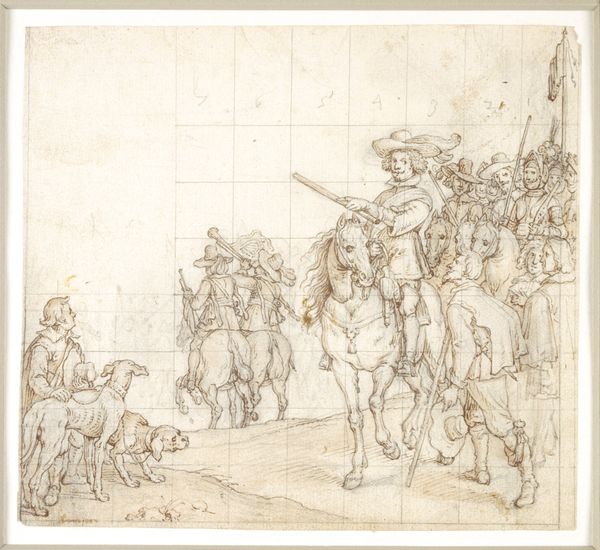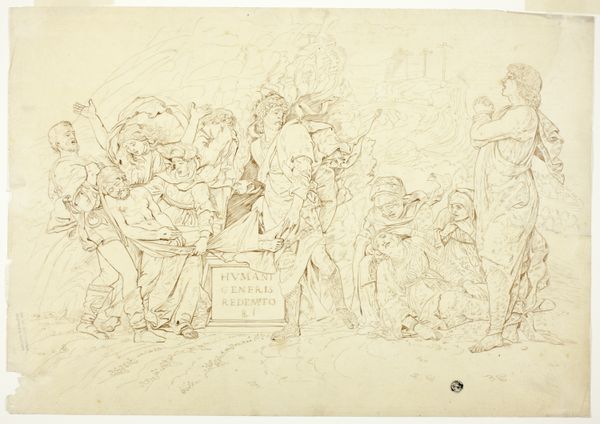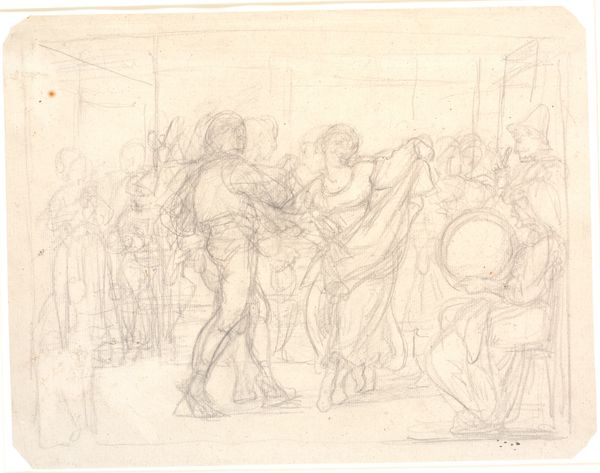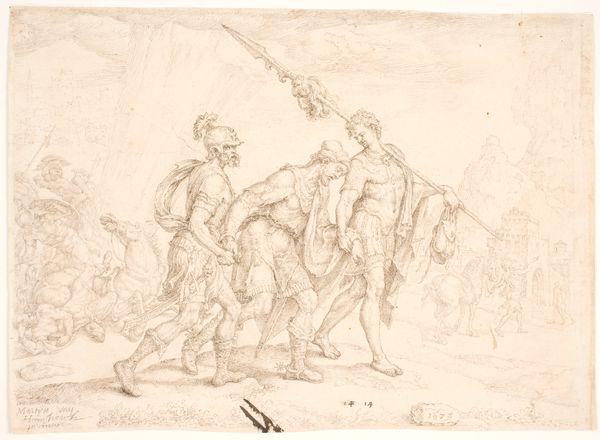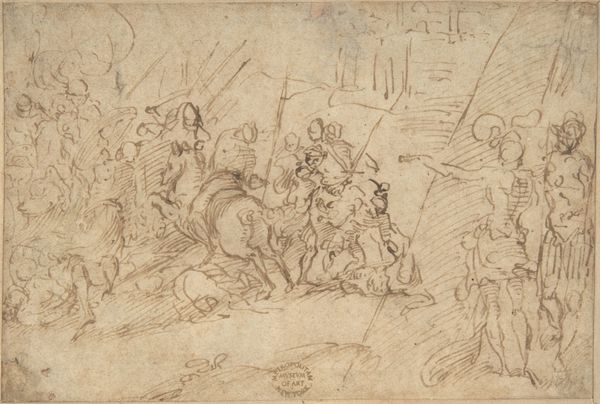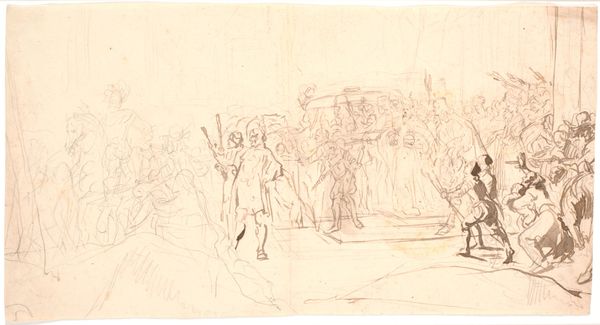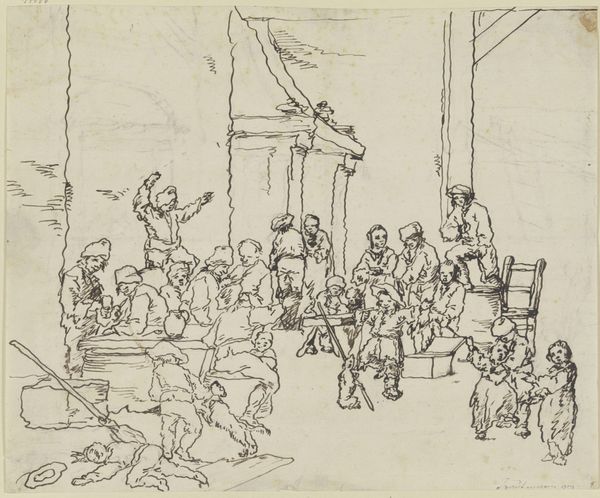
Udkast til maleri i Chr. IVs kapel i Roskilde "Chr. IV på Trefoldigheden" (1864-66) 1864
0:00
0:00
drawing, pencil
#
drawing
#
toned paper
#
sketch book
#
figuration
#
personal sketchbook
#
ink drawing experimentation
#
pen-ink sketch
#
pencil
#
sketchbook drawing
#
watercolour illustration
#
genre-painting
#
history-painting
#
storyboard and sketchbook work
#
academic-art
#
sketchbook art
#
watercolor
Dimensions: 196 mm (height) x 247 mm (width) (bladmaal)
Curator: I see turmoil. Chaos. The energy practically vibrates off the page. It's all these jagged lines and quick strokes. Editor: Indeed. This is a preparatory drawing by Wilhelm Marstrand, dating from around 1864 to 1866. The full title is rather a mouthful: "Udkast til maleri i Chr. IVs kapel i Roskilde 'Chr. IV på Trefoldigheden'." Curator: Right, a study for a painting intended for Christian IV’s chapel. Look at Christian himself, how Marstrand has placed him centrally. Editor: Marstrand is known for his history painting and genre scenes, so this subject matter fits right into the narrative of his time. The image shows Christian IV as the champion of Denmark, yes? And it depicts key events in his life that underscore his role as both monarch and man of faith? Curator: Precisely. But it goes beyond historical accuracy, look at the iconography—Christian’s raised hand, he is surrounded by what seems to be a cheering throng. It suggests triumph, strength, almost deification, while this is a toned paper work using primarily pencil and watercolour. Consider the artistic license Marstrand employs, constructing not just a historical record, but an enduring symbol. Editor: Well, he was contributing to the National Romantic movement. There was intense pressure in Denmark during that time for historical art to glorify Danish history and nationhood after the country experienced a string of political and military failures. How does this function within existing narratives? Curator: The upward gaze of the other figures contributes to the image of Christian as blessed, powerful. Even though it is a rough sketch, Marstrand imbues Christian IV with divine, heroic qualities, bolstering national identity via historical allegory. Editor: The sketch underlines how artistic skill merges with societal need and political purpose. The visual power in an unfinished state speaks volumes about how history could be strategically deployed. It seems that with this Marstrand made clear visual symbols and narratives were not mere reflections of history, but tools for shaping identity. Curator: Ultimately, it demonstrates how art functions as both a historical document and a cultural artifact, mirroring the complex dynamics of national identity during that era. Editor: And a striking demonstration that even preparatory drawings offer potent insight into the intersection of art, politics, and cultural memory.
Comments
No comments
Be the first to comment and join the conversation on the ultimate creative platform.
